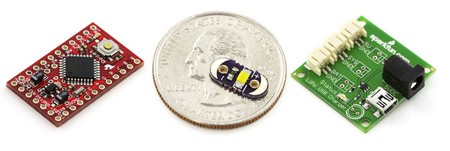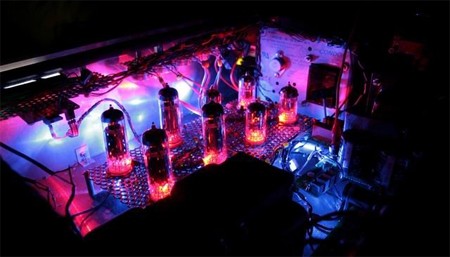
Sparkfun has recently released a bevy of new boards and other devices, with some very intriguing new builds among them.
The first board that caught our attention is the Wee. It is a compact Arduino compatible controller that features a small size, low voltage, and many other minimalist attributes. It is built around an ATMega 168V and uses all SMD parts.
For even tinier fun, check out the LilyPad LED. It is a LED designed to be incorporated into clothing, featuring large holes for threading, a thin and extremely small PCB and a very bright 250mcd light. It is also washable, meaning that one or many can permanently be incorporated into clothing without fear of losing them. You can see these in the turn signal jacket we covered earlier.
The last one we’ll discuss is the LiPoly Charger, a USB lithium ion battery charger. Based on the Max 1555 IC, the LiPoly can use USB bus power or a 2.1mm center positive wallwart power(it uses the more high-powered wall-wart if both are connected). It can’t charge NiMH batteries, but it is still compact, efficient, and very useful.

















